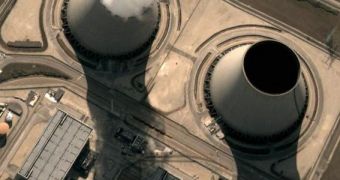Nuclear power plants contain most of the non-military radioactive material in the U.S. and with the latest support for the revival of nuclear energy, in order to reduce the dependence on foreign oil, the Department of Energy's Nuclear Energy Research Initiative wants new ways of making that energy source as safe as possible.
As of 2004, nuclear power provides 6.5% of the world's energy and 15.7% of the world's electricity. France, for instance, produces the highest percentage of its electrical energy from nuclear reactors-80% as of 2006.
The nuclear reactor is usually contained inside a cylindrical containment building, with one or more cooling towers venting non-radioactive water vapor. The cooling system is the most important aspect, since accidents like the one at Chernobyl were caused by malfunctions at the cooling system.
That is why the U.S. Department of Energy awarded a $550,000 grant to a project led by principal investigator Akira Tokuhiro, associate professor, along with Bruce Babin, assistant professor, Terry Beck, professor and Mohammad Hosni, professor and department head, aiming to find viable applications for implementing sodium-based cooling liquids for nuclear reactor.
"Liquid sodium works well for this task," Tokuhiro said. "Sodium conducts heat better than water, which is the current coolant of choice. In addition, sodium's boiling point is higher than water's. Reactors produce a lot of heat and you want a coolant that has a high boiling point."
So, Tokuhiro is planning to actually design a sodium-cooled reactor work that will operate safely and economically. "Since the speed of sound or acoustic waves change in sodium with temperature, if you can detect the change in this speed, you can back calculate the temperature of sodium - in principle," said Tokuhiro. "These thermohydraulic measurements need to be well tested in order to assess their applicability in a sodium-cooled fast reactor."
"This research will maintain and extend the U.S. nuclear sodium fast reactor knowledge base, as well as educate the next generation of professionals familiar with the sodium fast reactor," he concluded.

 14 DAY TRIAL //
14 DAY TRIAL //